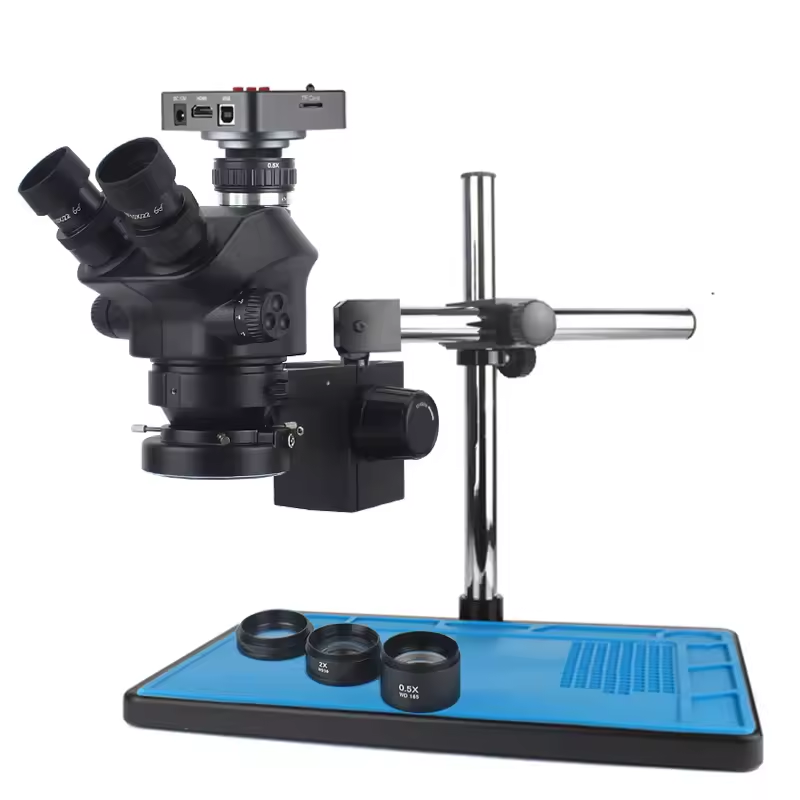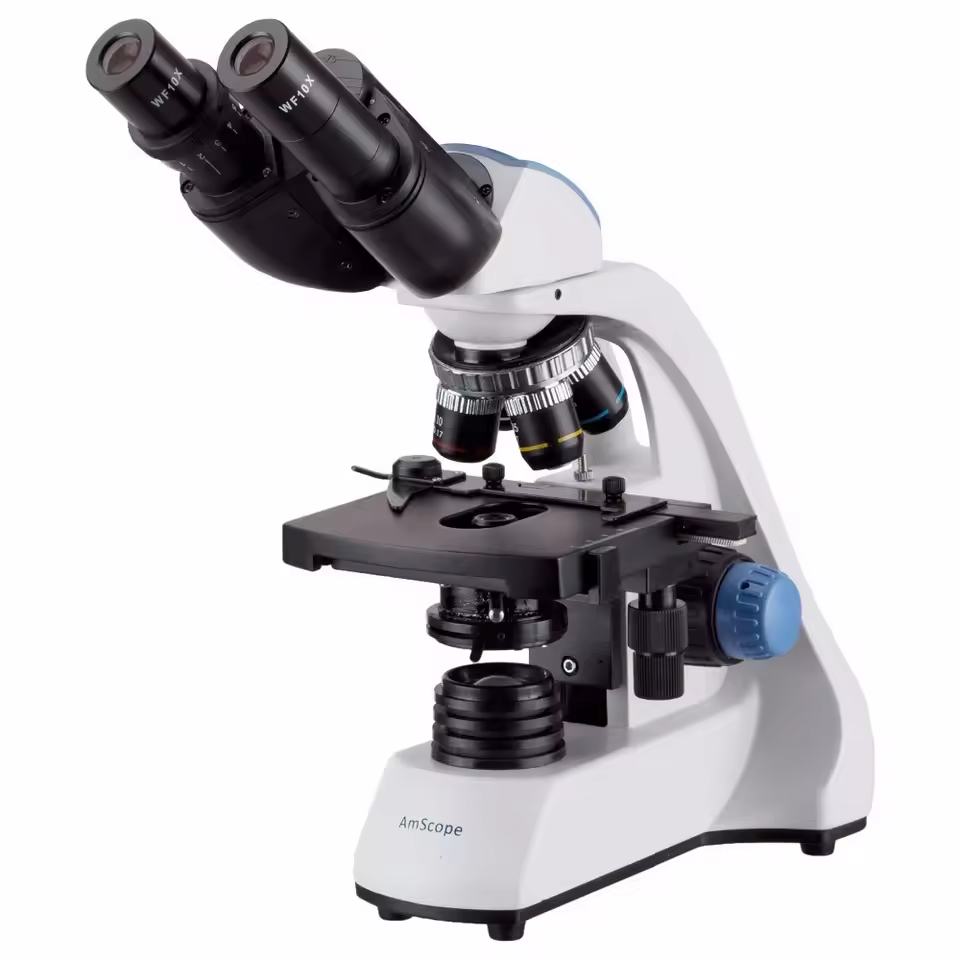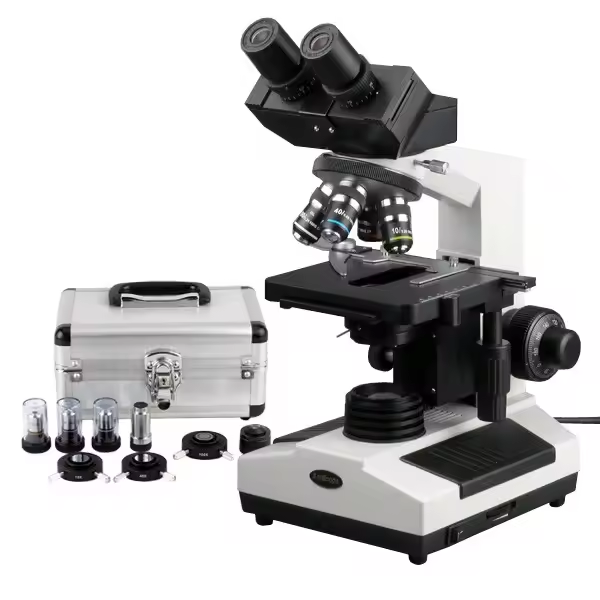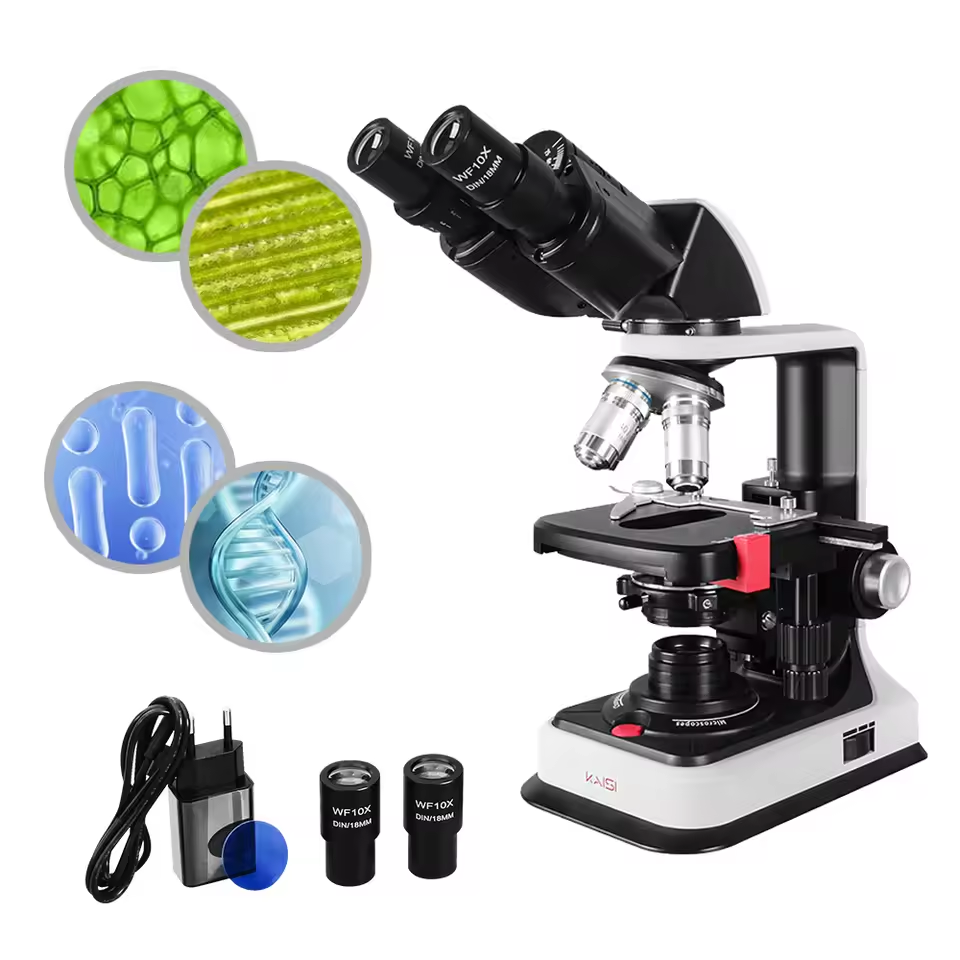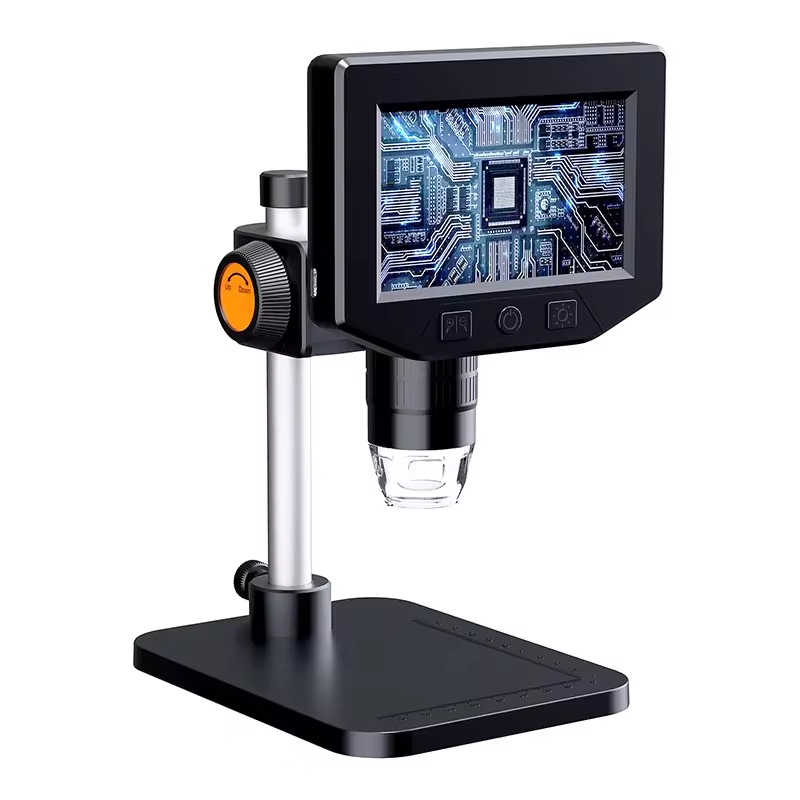Overview of Stage Microscopes
Stage microscopes play a crucial role in scientific research. They provide a platform to hold and manipulate a specimen under examination. The stage microscope function varies with different types and models, but the key purpose remains consistent. It offers precision in analysis and clear observation of small-scale samples.
With a steady surface, the stage locks the specimen in place. Users can move the slide smoothly to view different sections. This level of control is vital for detailed study. The stage often comes with clips or other mechanisms. They secure the slide, ensuring that the focus is steady during the observation.
Understanding the function of microscope stages helps users make better observations. It ensures samples are well-positioned for the highest quality view. With advancements in technology, stage microscopes now offer more functionalities. These include automated movements, measurements, and even image capture for analysis.
Key Components of a Microscope Stage
Microscope stages come with several key components that enhance their functionality. Here’s a breakdown of what you might find on a typical stage microscope:
- Slide Holder: This is where you place the specimen slide. It usually has clips or a secure mechanism to keep the slide in place.
- Moving Knobs: These are used to manually move the stage left, right, up, or down. They allow precise control when viewing different parts of the specimen.
- Calibration Ruler: Some stages have a ruler for measuring the movement of the slide. This helps in making accurate observations and notes about the specimen’s size.
- Control Panel: On motorized stages, a control panel with buttons or a joystick can be found. It manages the automated movements of the stage.
Each component plays a role in the stage microscope function. These parts work together to provide stability, precision, and maneuverability. When using a microscope, understanding these components can result in more effective handling and better sample analysis. These features are critical for researchers who require consistency and accuracy in their work.
Types of Microscope Stages
Selecting the right microscope stage is vital for precise sample examination. There are mainly two types of stages used in microscopy: mechanical and motorized.
Mechanical Stages
Mechanical stages are the more traditional option, often found in educational and basic research settings. They require manual adjustment to move the slide. Users turn knobs to shift the specimen in various directions. Mechanical stages are known for their simple design and reliability. They are ideal for those who need a stage microscope function without the complexity of electronic parts. A mechanical stage’s manual controls offer tactile feedback, which can be crucial for delicate sample manipulation.
Motorized Stages
Motorized stages represent the evolution of stage microscope function. They are equipped with electronic motors that adjust the slide’s position. Controlled by a panel or a computer, motorized stages allow for precise, reproducible movements. This is essential for advanced research, where consistency and efficiency are key. With a motorized stage, users can perform complex tasks like scanning large areas or automating repetitive movements. The accuracy and speed of a motorized stage help to streamline workflow in high-throughput environments.
Both types of stages bring different advantages to microscopy. The choice between a mechanical or motorized stage will depend on the specific requirements of the sample analysis and the resources available.
The Role of the Stage in Microscopy
The stage is the platform of a microscope where we place our specimen. Its role is simple yet crucial for any microscopic analysis. It provides a secure area for the specimen to be viewed and interacted with. With the right support, it ensures that the sample stays in focus during observation, this stability is essential for high-quality imaging.
In microscopy, the stage is not just a holder, it is also a guide. By allowing precise movements in X and Y directions, it helps in exploring different parts of the specimen. Every adjustment made to the position of a specimen can reveal new insights, making the stage a key tool for discovery.
Not only does the stage hold and maneuver the specimen, but it often plays a role in measurement too. Some stages come with scales that help in noting the size of the sample or the area being examined. This capability is particularly useful for detailed analysis and documentation.
The stage microscope function is also about adaptability. Different samples might require different types of stages. A solid understanding of the stage’s function allows researchers and students alike to choose the appropriate stage type for their work. From a simple slide holder to an advanced motorized stage controlling multiple axes, the stage must match the demands of the examination.
Moreover, with advancements in technology, the function of microscope stages continues to evolve. Innovative design improvements aim to provide even greater accuracy and ease of use, catering to the growing complexity of scientific research. Indeed, the stage is the unsung hero of the microscope, quietly and steadfastly setting the foundation for micro-level exploration and discovery.
How to Use a Microscope Stage
Once you understand the stage microscope function, using it becomes straightforward. Here is a step-by-step guide to help you get started with a microscope stage:
- Secure the Slide: Begin by placing your specimen slide on the stage. Use the clips or secure mechanisms to ensure the slide does not move unexpectedly. This is the first step to obtain a clear view.
- Find the Initial Focus: Use the coarse adjustment knob on the microscope to bring the specimen into a rough focus.
- Make Precise Adjustments: Switch to the fine adjustment knob for sharp, detailed focus. This is crucial for high-quality imaging.
- Navigate the Slide: Use the moving knobs to gently glide the stage in various directions. This will allow you to view different areas of your specimen.
- Take Measurements: If your stage has a calibration ruler, use it to measure the specimen or record movement distances.
- Document Your Findings: Always take notes on your observations, including the positions and measurements obtained using the stage.
- Use Stage Control: On motorized stages, familiarize yourself with the control panel or joystick for automated movements.
Remember to be gentle when you manipulate the stage. Rough handling can damage both the stage and the specimen. Keep your movements smooth and controlled for the best results. Regular practice will increase your skill level and comfort in using the various stage microscope functions efficiently.
Common Stage Movements and Their Importance
When working with microscopes, understanding stage movements is essential. Each move improves how we see and analyze specimens. Here’s why they matter:
- Horizontal movement: Shifts the slide left or right. This lets us explore different horizontal areas of the sample without repositioning it.
- Vertical movement: Moves the slide up or down. Useful for examining the sample’s top to bottom features.
- Forward and backward movement: Helps in focusing on various depths of the sample. Crucial for three-dimensional specimens.
- Diagonal movement: This combines horizontal and vertical moves. It gives a more dynamic view across the specimen.
These movements ensure that every detail of the specimen can be brought into focus. Stage microscope function aids in thorough examination, crucial for accurate results. It’s especially vital for tasks like cell counting, where every part of the slide must be visible. Smooth and precise stage control also prevents damage to delicate specimens.
In sum, proper stage movement is key to effective microscopy. It allows for comprehensive sample study and supports high-precision tasks. With practice, users can optimize these movements for better outcomes. Regular maintenance of the stage ensures ongoing reliability and precision of these movements, reinforcing the value of understanding the stage microscope function.
Maintenance and Care for Microscope Stages
Proper maintenance and care are vital for preserving the stage microscope function. Here are essential tips to keep your microscope stage in top condition:
- Regular Cleaning: Dust and debris can accumulate on the stage, affecting movement and accuracy. Clean the stage regularly with a soft, lint-free cloth.
- Avoid Spills: Chemicals or liquids can corrode the stage’s components. Be careful not to spill anything on the stage.
- Check for Wear: Inspect moving parts for signs of wear and tear. Replace any worn components to maintain smooth operation.
- Lubrication: Apply lubricant to the mechanical parts if recommended by the manufacturer. This keeps movements smooth and prevents rust.
- Gentle Use: Operate the stage controls with care. Rough handling can cause misalignment and damage.
- Storage: When not in use, cover the microscope to protect the stage from dust. Store in a dry and cool place.
Regular attention to these details will extend the lifespan of your microscope stage. It ensures that each stage microscope function operates with precision, supporting accurate and reliable results in your microscopic work.
Advances in Stage Microscope Technology
With the march of technology, the stage microscope function has greatly evolved. Scientists and researchers now benefit from advances that were once thought to be the realm of science fiction. Here, we delve into the latest developments in stage microscope technology.
- Automated Stage Control: Advanced software allows users to automate stage movements. This precision enables smooth transitions and consistent focus across slides.
- Integrated Measurement Tools: Modern stages come with digital rulers and software for accurate measurements. This feature simplifies the documentation process.
- Programmable Stage Positions: Users can now program stages to move to predefined positions, speeding up repetitive analysis.
- Remote Operation: Stages can be controlled from a distance using computers or mobile devices. This is useful for teaching or sharing results.
- Advanced Material Construction: The use of new materials has made stages lighter and more durable, resistant to corrosion and wear.
- Environmental Controls: Some stages offer temperature and humidity controls, critical for sensitive or live specimens.
- Vibration Isolation: New designs include vibration isolation features to keep the sample steady, even in a busy lab environment.
These advancements have not only increased the stage microscope function but also opened up new possibilities for research and exploration. As technology continues to advance, we can expect even more innovative features that will further revolutionize the field of microscopy.
